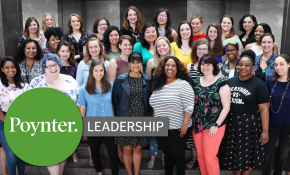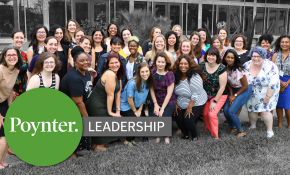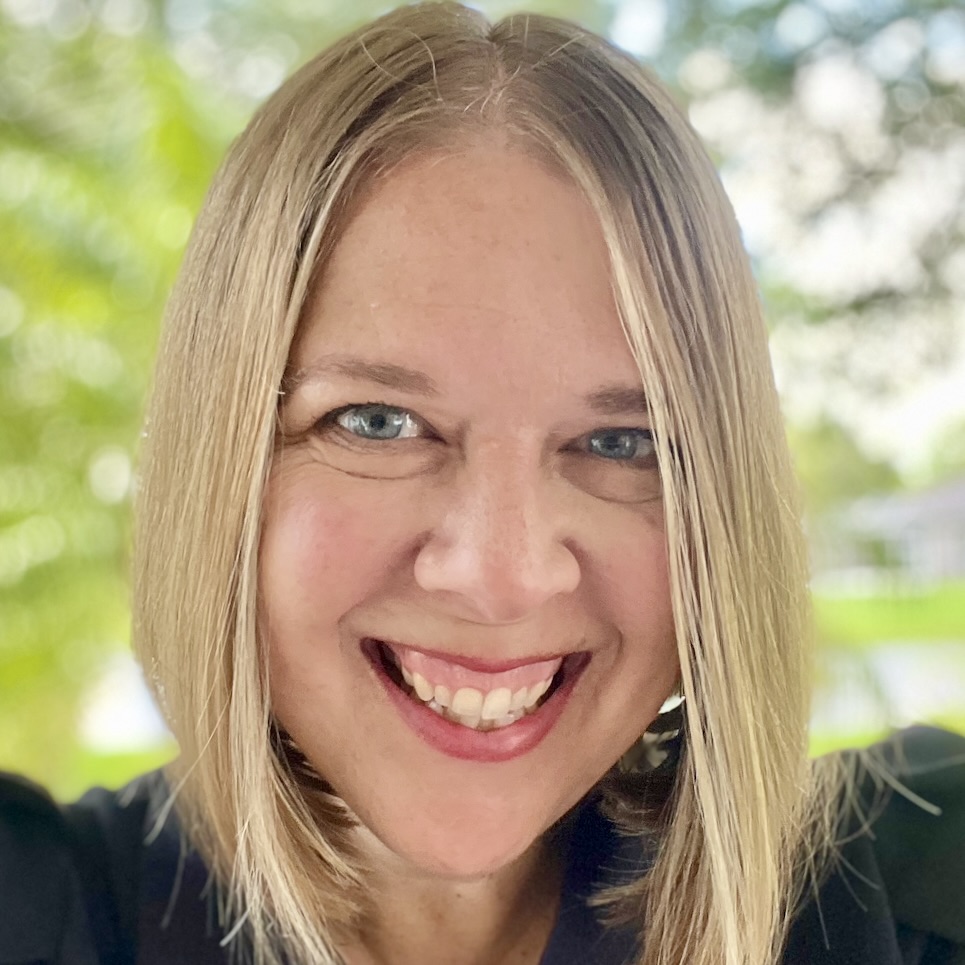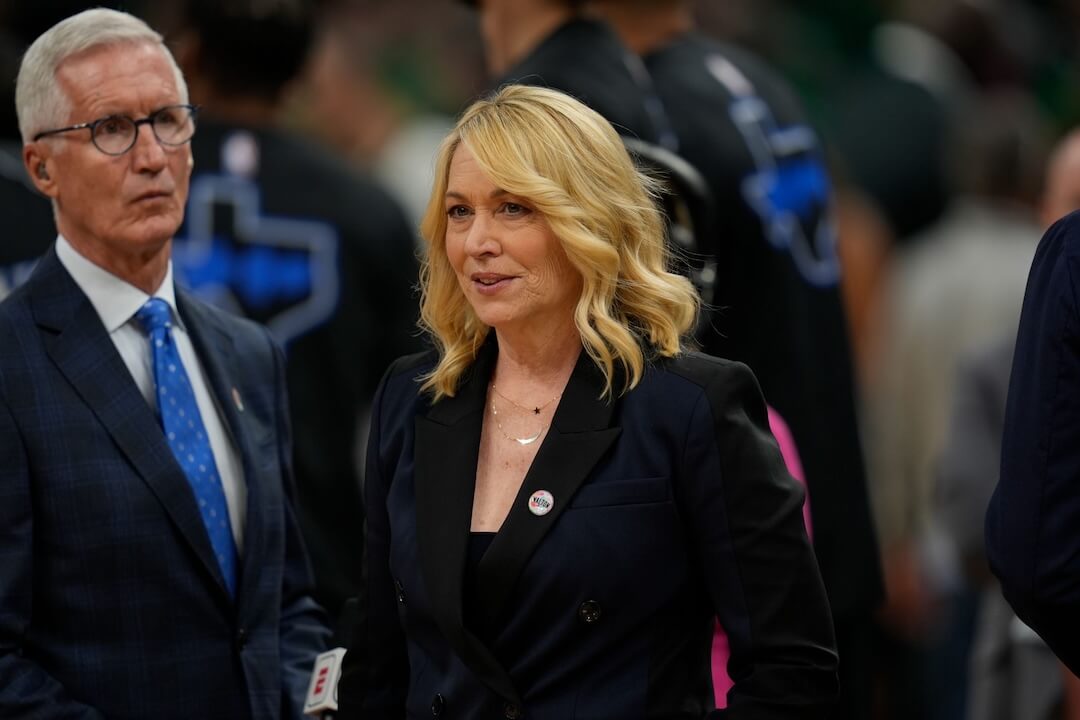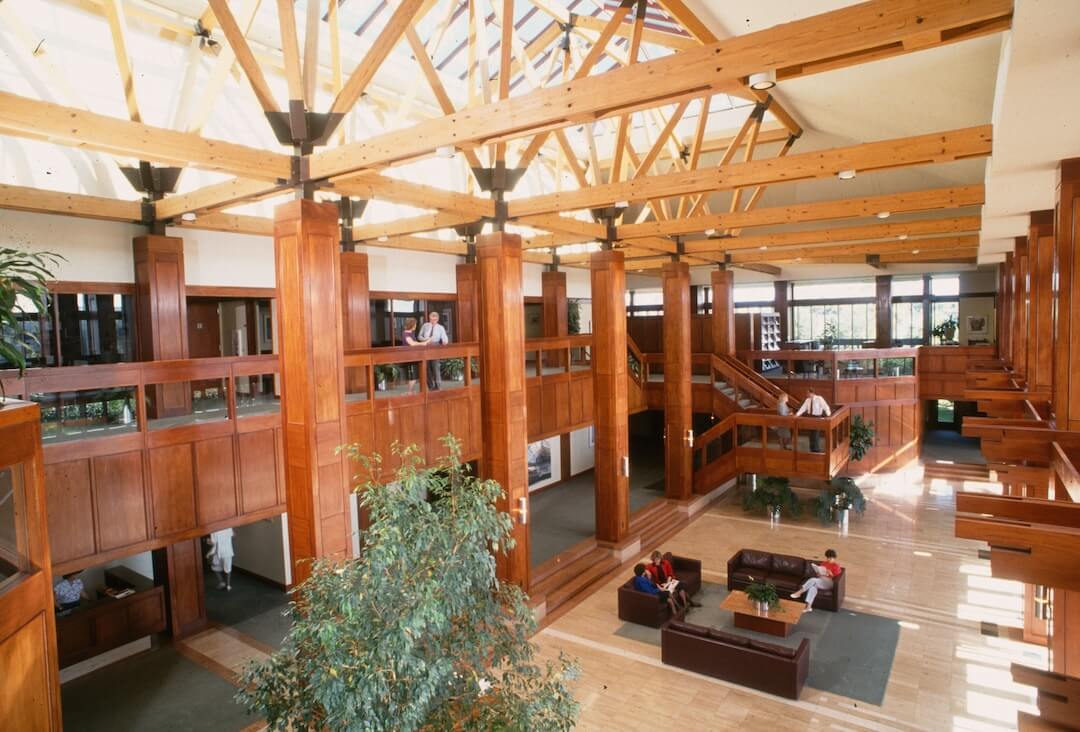This piece originally appeared in Local Edition, our newsletter following the digital transformation of local news. Want to be part of the conversation? You can sign up here.
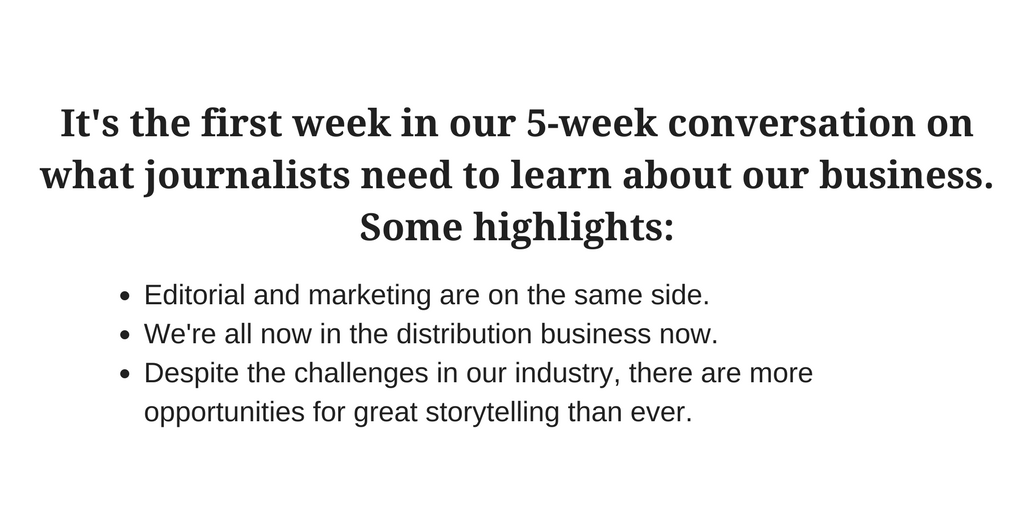
What do you call the people who sell ads, run events, create products and market the journalism you and your newsroom create?
Probably "the business side."
As we begin talking about what journalists need to learn about the business of journalism, it's interesting to look at the language we use to describe our non-news colleagues. "The business side" implies there's more than one side.
And often, it can seem we're pitted against each other.
But aren't we all on the same side? That is the side of covering our communities, getting that information to them and (let's be practical) staying employed?
I think most of us understand why there are sides, and why they're necessary. But should there be a wall between us or, as Richland Source's Jay Allred told Nieman Lab a few years ago, a fence?
This week, I spoke with the Minneapolis Star Tribune's Derek Simmons and BKLYNER's Liena Zagare about how to figure out that we have the same mission.
Our conversation was edited for length and clarity.

Will you both just start by introducing yourselves and tell us how you got into the work that you're doing now?
Derek: Sure, I'll start. My name is Derek Simmons, I'm the chief creative officer for the Star Tribune in Minneapolis, Minnesota. This is my second stint in Minneapolis, I was here for nine years in various roles before in visual journalism, then left and worked at the Los Angeles Times as deputy design director for seven years, and then came back four years ago as the assistant managing editor for visuals. I oversee a group of about 60 people in the newsroom – photography, video, digital, print design, graphics, technology.
This role that I recently was promoted to is something that I've kind of been doing for the last four years, and that is working with other groups outside of the newsroom on how to go about creating additional revenue streams or ways to sell our content.
Liena: My name is Liena Zagare, I've been doing hyperlocal news in Brooklyn for about a decade. My newsroom is a tiny fraction of your newsroom. I almost hesitate to say the number.
Kristen: Say it! We want to hear.
Liena: It's like a handful of journalists that are full-time and a dozen freelance/students that we work with at colleges and a small business team. I basically wear 17 hats still. I was hoping that after a decade of doing this I would not, but the reality is such that for a small, bootstrap thing to grow, we're still doing that.
Kristen: When I first started in journalism in 2003, the wall between business and editorial was both literal and figurative. Now, it seems like one of the realities for newsrooms, regardless of their size, and for journalists, regardless of their specialty, is that it's more and more important to understand the business side. Was it hard for you both to transition into thinking about both sides? How did you do it?
Liena: We started with digital only, and even that has been changing so massively. In 2007, there was hardly any Facebook and hardly any Twitter. Forward to 2017 and you've got 16 different platforms to distribute your content and your audience is everywhere. It's just a massive change even within just the digital environment.
You keep adjusting your model. You keep trying to figure out how to make money along the way.
I think for community news, which essentially is what hyperlocal is, that line between business and news was never quite so strict, especially when it came to small newsrooms. I can put two hats on. With one I'm the editor-in-chief, with one I'm the publisher. I have to keep that line strict. It's very clear in my head. It is something that I can live with.
Derek: I'd say for maybe the first 10 years of my career, I never even gave a thought to the business side. It's not the reason I got into journalism. And we were so strong at the time that we could operate in separate silos and it didn't matter. Money was coming in, the industry was healthy, everything that we were doing was working.
Obviously, a lot has changed in the last 10 years.
What's really got my attention is just understanding better the business side and their frustrations and their limitations and the problems that they're trying to solve, and then being a conduit for the newsroom side so they can understand what we're trying to do.
More so than ever, it's a necessary person to have in the newsroom – someone who can work between the floors and can make those connections. I think we're all trying to do the right thing. But before, it seemed like everyone was in their separate silos. That model used to work. And then it broke down.
Arming our business side with more information about what we're doing in the newsroom I think makes things more sellable.
Kristen: What are the biggest misconceptions between how the business side views what the journalism side does, and vice versa? What myths do they have about each other?
Derek: I think one of the myths for sure on the business side is that the newsroom isn't interested in advertising, that we would prefer a world with no advertising. And that's certainly not true. I think sometimes we feel a little suffocated by it, and managing that is super important. But it's absolutely an essential part to us being able to operate as a business and being able to continue doing what we do.
On the newsroom side, maybe, it's that advertising is only interested in the sale.
Liena: I'm going to completely agree with you. We all care about each other.
Derek: Yeah, we're one large group now. Before, I think we could afford to operate in our different silos, and everything was great. But we're in a world now where we all have to work together. We're much better as a collaborative team rather than trying to run on our own parallel tracks.
Kristen: You've found that to be true, too, Liena?
Liena: Yep. Absolutely. In our newsroom, we all sit in the same room. The business team wants to have good stories that have impact and reach. It helps to have the credibility. It aligns with the brand and it makes it easier for them to sell when we do great stories, and it makes it easier for us to do great stories when they can sell. It's really simple.
Kristen: It sounds like the place to start with is realizing that everybody has the same goal?
Liena: Yes.
Derek: Yes. Absolutely. I absolutely think the people on the business side are proud of what we do as a journalism institution. I think they're in it, just like we are, for a reason, because they believe in the mission and they believe what we do is important.
It's been really interesting to meet more folks on that side and hear them talk about certain stories that we do and the importance of journalism in a democracy and the power that we can have as an institution.
Kristen: So once we can agree that we have a shared mission, what do you need to do to get your journalists aware of what's happening on the business side?
Derek: I think we're already partially down that path. I think most people are pretty clear-headed about what needs to be done and the fact that we're in a situation that's so different than we were 10 years ago. The more positive examples we can produce, it's showing rather than telling. Any project that we work on I hope is evidence that this can be done and it's a positive thing and it only helps strengthen the business as a whole.
Liena: I think nobody is doing incredibly great financially, I don't know of any single organization except maybe cable TV that's doing really amazing. So there is already that alignment that we need to both be doing our best to make ends meet.
It really helps to be aligned on the mission, because what we're trying to do is bring the best journalism that we can to the communities we serve. The sales team doubles my team, in terms of finding stories, sourcing stories, helping distribute stories, connecting us with people they come across. It is really very synergetic.
Kristen: Can you tell me about some projects that show that synergy?
Derek: One is we started a magazine this year. We've done one in our past and we resurrected it this year. It was a really good example of marketing, advertising, circulation, and news all coming together to formulate this plan about how we were going to go about it.
We're just doing it quarterly to start, and it's been wildly successful. It's been successful as an advertising model. It's been successful as something that our readers are enjoying.
It really helps when we team tackle these projects.
Liena: It is just team work. Whether we design a series of stories on a certain topic that they can find sponsors for or just brainstorming together. There's no conflict in my newsroom. Not with this.
Kristen: So a shared mission, awareness of what the other side brings, what's the next thing that has to happen in this equation, or is this as far as it goes?
Liena: I think the journalists, at least in our newsroom, have stepped into the distribution business. You have to promote your stories, make sure they get the maximum reach they can, and that can at times feel like, you know, I'm doing sales, I'm doing marketing. My job is to report. But that is probably the hardest thing for someone who's just used to writing.
I always thought what's the point of writing if no one reads it?
Derek: That's been a really big one for us, too, the self-promotion thing. It goes against what we were brought up to do. The "no cheering in the press box" thing for most journalists has been a huge thing.
But you've got to make people aware of what you've got.
Liena: It just keeps changing. That's the hard part.
Derek: One thing I'll say about most newsrooms is going through this time in this industry has really forced us to be nimble and to accept that there isn't a constant, there's always going to be a next thing. And that may be one of our best qualities now. People don't slow down to ask why anymore. They listen to the idea, they hear the pitch, and then they figure out how to best go and tackle it.
Liena: Yeah, I will beg to disagree just a little on that. That's probably not good. We should always question just in terms of what the value is. It's one thing to try it out and experiment and assess. It's just figuring out where you need to be.
It is also extremely exhausting. I think the last 10 years of change for most people in the industry has been very, very exhausting.
Kristen: I know I've felt that way. Could you both share some advice for journalists who still live in that silo? Where do they start if they want to learn more about how we work?
Derek: My main advice would be to be open. Maybe not lean into what you know or what you did previously, but just be open-minded to the future and a new collaboration. All of our industry is at stake.
A lot of what we do is because we want to continue to tell great stories. That's the ultimate foundation for everyone in this building. And if we want to continue to tell great stories, if that's your mission, then I think it's best for you to come out of your silo and listen and try to evolve.
Liena: Keep that goal of telling great stories to the audiences you care about. Look at how you consume news and where you consume news, when you consume it. And then see if your stories are there.
As Derek said, the industry is not flourishing right now. It's quite critical. It depends on all of us to make it big and beautiful.
I do think there's going to be some kind of consolidation at some point. All of these small newsrooms and reporters that are popping up to fill in the gaps left by the ebbs and flows of traditional newspapers covering the communities, there's only so much they can do.
You do need that bigger capacity to adapt to technological change. You are going to need more resources. If you're in a small newsgroup, you will be doing everything and you're going to have to keep an incredibly open mind about how to get your stories to the most people you can.
Derek: We've talked a lot about all the changes in the last 10 years and how the business model's been turned on its head and trying to reinvent, but I absolutely 100 percent believe we're in the most exciting time the world has ever known in terms of telling stories.
While it's daunting, it's still very, very exciting.
Liena: Yes. For creating news and the ability for just anyone to create really beautiful stuff is incredible. It's mind-blowing. For discovery, too. Everyone is a storyteller. I have enormous respect for everyone who's stuck it out in the industry, and I hope that the business side sorts itself out sooner rather than later.
There is an enormous power in telling stories. The tools are there. It's just figuring out how the money works.
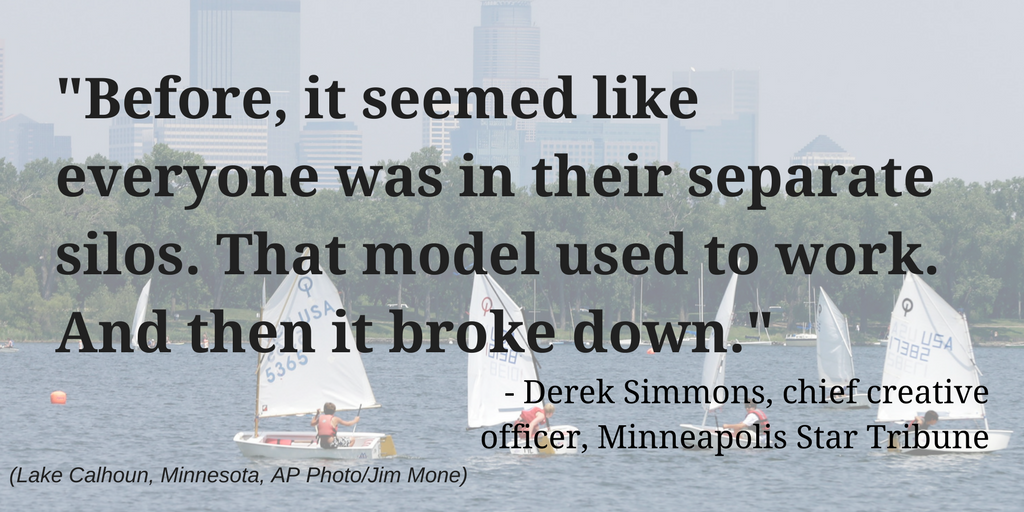
Thanks, Liena and Derek, for the good and real talk.
Now it's your turn. What is your work doing for your company's bottom line? Share your thoughts (and anything else you want to talk about with the biz side) with me via email, in comments below or on Twitter. I'll share them next week.
In the meantime, did you see there's going to be a kind of Peace Corps for local news? You can still register for next month's Local Independent Online News Publisher's conference in Chicago. And check out this free course from Poynter's News U on financial literacy basics.
See you next week!


